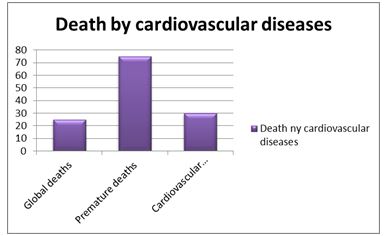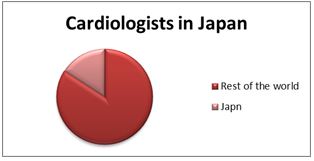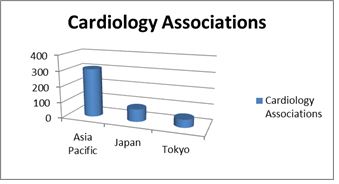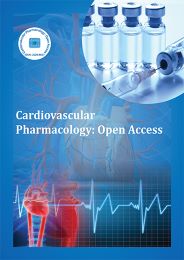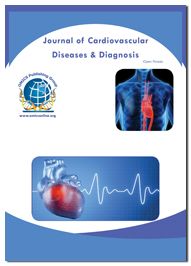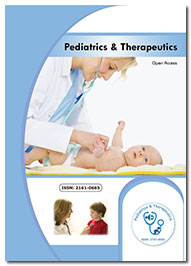Theme: Complementing difficulties and potential results in Cardiology
Asia Pacific Heart Congress 2020
Conference Series Ltd welcomes you to go to the World Congress on Heart and Pediatric Cardiology to be held on August 19-20, 2020 at Tokyo, Japan which includes prompt Keynote sessions, Special talks, Symposiums, Workshops, Oral presentations, Poster presentations and Exhibitions. The conference will be organized around the theme of “Complementing difficulties and potential results in Pediatric Cardiology”.
Conference Series Ltd will unite world-class Lecturers, researchers and cardiologists to examine techniques for disease remediation for heart in this cardiology meeting. This Asia Pacific Heart Congress 2020 is proposed to give grouped and stream preparing that will keep therapeutic specialists one next to the other of the issues affecting the evasion, finding and treatment of cardiovascular ailment.
This medicinal gathering will give a total redesign on all restorative, careful, intervention, and electrocardiography focuses in cardiology. Pros with national and all inclusive reputations in various cardio sub-specialties will address the latest guidelines; practice precedents and game plans in cardiovascular medication. Additionally, members will get some answers concerning late preliminaries being cleaned that are inclined to affect future practices. Instinctive sessions will fuse talk of current conflicts in clinical practice. The walled in area of cardiology will be verified include: coronary sickness, imaging, heart disillusionment, arrhythmia's, evasion and general cardiology, cardiovascular medical procedure, pediatric cardiology and different intervention cardiology.
Why to attend?
Asia Pacific Heart Congress 2020 is among the World's driving Scientific Conference. The multi day event on pediatric cardiology gathering will have 60+ Scientific and specific sessions and sub-sessions on cutting edge examination and latest investigation advancements in the field of cardiology and heart medical procedures over the globe.
Around the world focused on learning about Heart. Pediatric Cardiology Conference 2020 is among the world’s impactful scientific conference and its advances in making a healthy Heart; this is your best opportunity to reach the largest assemblage of participants from the Heart community.
Addresses by dynamic experts
Keynote gatherings by Prominent Professors, Doctors
Open Innovation Challenges
Notice introductions by Young Researchers
Worldwide Networking sessions with 50+ Countries
Novel procedures to profit your examination
Best stage for Global business and Networking openings
Meet the editors of alluded diaries, Society and Association individuals over the Globe
Brilliant stage to exhibit the most recent items and plans in Cardiac field
Target Audience:
Cardiologists
Pediatric Cardiologists
Cardiovascular Surgeons
College Professors
Different Societies and their individuals
Medical Directors, Students
Heart Associations and Societies
Cardiac Nurses
Health care Professionals
Business Professionals
Foundations Medical Schools
Academicians: University Faculties, Research Scholars, and Scientists included
Track 1: Cardiology:
A cardiovascular expert opens the chest and performs heart therapeutic method. A cardiologist invests critical energy in diagnosing and treating afflictions of the cardiovascular system. The cardiologist will total tests, and they may some do techniques, for instance, heart catheterizations, angioplasty or embedding’s a pacemaker.
Suggested Conferences: World Neonatology Congress | Pediatric Nursing Conferences | Global Healthcare Events | Heart congress 2018
World Pediatrics Summit | June 20 – 23, 2019 | Berlin, Germany; International pediatrics Surgery Conferences | April 23-24, 2019 | London, UK; World pediatrics Summits | June 6 - 7, 2019 | London, United Kingdom; International Clinical pediatrics Conferences | June 10-12, 2019 | Berlin, Germany; International pediatrics Exhibition 2019 | Maui, Hawaii | February 2 - 8, 2019; International Conference on pediatrics Health | August 12-14, 2019 | Rome, Italy
Related Societies: Heart Failure Society of America| American Society of Echocardiography| Alliance of Cardiovascular Professionals| Society of Invasive Cardiovascular Professionals | Asian Pacific Society of Cardiology| European Society of Cardiology
Track 2: Pediatric cardiology:
A pediatric cardiologist is a pediatrician who has gotten broad preparing in diagnosing and treating kids' heart issues. In instances of progressively huge coronary illness, a pediatric cardiologist may play out a cardiovascular catheterization so as to analyze or treat the kid's heart issue.
Track 3: Pediatrics Heart Murmurs:
Blood moving through the heart as a rule makes a lub- dub Noise. Some heart murmurs are guiltless heart murmurs. This implies there's nothing amiss with your child's heart, and the murmurs for the most part leaves with time. Innocent heart murmurs can happen when your kid has a fever.
Track 4: Cardiac Stroke:
A heart attack occurs when blood flow to a part of the heart is blocked, usually by a blood clot. Without oxygenated blood, the heart muscle begins to die. A stroke is a brain attack, cutting off vital blood flow and oxygen to the brain. Stroke happens when a blood vessel feeding the brain gets clogged or bursts.
Track 5: Pediatric heart transplantation:
Heart transplantation in newborn children and youngsters is presently acknowledged treatment. In 2014, 586 heart transplants were performed in youngsters around the world. In 2016, 444 heart transplants were performed in patients as long as 17 years old in the United States. The extent of pediatric transplant patients by beneficiary age has remained generally stable in the course of the most recent decade.
In babies, innate deformities are as yet the most widely recognized sign for heart transplantation. Innate cardiomyopathy happens in roughly one of every 10,000 live births
Track 6: Pediatric and Neonatal Cardiology:
Neonatology is a subspecialty of pediatrics that comprises of the therapeutic consideration of babies, particularly the evil or untimely infant. It is an emergency clinic based claim to fame, and is typically practiced in neonatal escalated care units (NICUs). The primary patients of neonatologists are babies who are sick or require exceptional restorative consideration because of rashness, low birth weight, intrauterine development limitation, innate mutations (birth absconds), sepsis, pneumonic hypoplasia or birth asphyxia.
Track 7: Cardiac Nursing and Healthcare:
Heart nursing is a nursing quality that works with patients who experience the evil impacts of various conditions of the cardiovascular system. Cardiovascular specialists help treat conditions, for instance, insecure angina, cardiomyopathy, coronary supply course sickness, congestive heart dissatisfaction, myocardial limited putrefaction and heart dysrhythmia under the heading of a cardiologist.
Heart medicinal overseers perform postoperative thought on a watchful unit, stress test evaluations, cardiovascular watching, vascular checking, and prosperity examinations. Heart chaperons must have Basic Life Support and Advanced Cardiac Life Support affirmation. In like manner, heart specialists must have explicit capacities including electrocardiogram checking, defibrillation, and prescription association by industrious intravenous stream.
Cardiac nurses work in many different environments, including coronary care units (CCU), cardiac catheterization, intensive care units (ICU), operating theatres, cardiac rehabilitation centers, clinical research, cardiac surgery wards, cardiovascular intensive care units (CVICU), and cardiac medical wards.
Track 8: New directions in cardiovascular surgery:
Numerous enhancements have developed, especially in valvular coronary illness and in coronary corridor ailment. There will be proceeding with pressure over who will get implantation of interventional gadgets rather than who will have conclusive heart medical procedure.
There will keep on being coronary detour, valve medical procedure, grown-up inherent fix, arrhythmia removal, heart disappointment systems, and endovascular treatment of aneurysms. The last inquiry will be about the planning of administration line incorporation and who will do what methodology to which patients.
What is evident is that for the best treatment of patients, the administration line idea should be progressively pursued with a total and close cooperation between the clinical cardiologist, interventional cardiologists, heart anesthesiologists and cardiovascular specialists to accomplish the best and most enduring outcomes for the people that are most worried about our patients.
Track 9: Pediatric cardiac intensive:
Pediatric cardiovascular serious consideration is a quickly creating claim to fame that takes into account the requirements of kids with intrinsic coronary illness. With expanding unpredictability of inborn heart fixes in the present period, devoted pediatric cardiovascular escalated care units (PCICU) have turned into a need for the perioperative administration of these basically sick kids. Devoted concentrated consideration units (ICU), kept running by an intensives, who drove a multiprofessional group is known to create better outcomes. However, information explicit to committed cardiovascular careful ICUs are generally few. Focused pediatric cardiovascular projects appended to youngsters' clinics have turned into a reality in a few created countries. Pediatric heart concentrated consideration is still in the advancing stage in many rising countries, including India. Most of pediatric cardiovascular projects in such countries are joined to well-running, grown-up heart careful concentrated consideration units. Subsequently, pediatric patients, after intrinsic heart medical procedure, are generally treated in a joined grown-up and pediatric cardiovascular careful ICU.
Track 10: Pediatric Cardiac Coding:
This year with the new cardiology coding and rules, cardiologists are in the predicament. Besides; CMS brings down the repayment as a major aspect of its different system installment decreases for imaging administrations. This will prompt a decrease of 22% on the specialized modules of the lower-evaluated administrations.
It is basic to have the correct coding refreshes for your cardiology practice; more basic than any time in recent memory, considering the extreme pay cuts and elevated review investigation. With such unpleasant occasions ahead, cardiology rehearses require preparing for the most recent reports on cardiology coding rules guaranteeing that there aren't; any oversights occurring. Further; guaranteeing to make the cardiology rehearses sufficiently effective regardless of the cuts.
Track 11: Pediatrics cardiac Tumors:
Cardiovascular tumors are generous or threatening neoplasms emerging principally in the inward coating, muscle layer, or the encompassing pericardium of the heart. They can be essential or metastatic. Essential cardiovascular tumors are uncommon in pediatric practice with a predominance of 0.0017 to 0.28 in post-mortem examination arrangement. Interestingly, the rate of heart tumors amid fetal life has been accounted for to be roughly 0.14%. By far most of essential cardiovascular tumors in kids are favorable, while around 10% are threatening. Auxiliary threatening tumors are 10– multiple times more predominant than essential dangerous tumors. Rhabdomyoma is the most widely recognized heart tumor amid fetal life and adolescence. It represents over 60% of all essential heart tumors. The recurrence and sort of heart tumors in grown-ups contrast from those in youngsters with 75% being generous and 25% being threatening. Myxomas are the most widely recognized essential tumors in grown-ups establishing 40% of kindhearted tumors. Sarcomas make up 75% of threatening heart masses. Echocardiography, Computing Tomography (CT) and Magnetic Resonance Imaging (MRI) of the heart are the principle non-intrusive demonstrative devices. Heart catheterization is only from time to time vital.
Track 12: Adolescent cardiology:
Adolescence, transitional period of development and improvement among youth and adulthood. The World Health Organization (WHO) characterizes an immature as any individual between ages 10 and 19. This age run falls inside WHO's meaning of youngsters, which alludes to people between ages 10 and 24.
Track 13: Clinical Pediatric cardiology:
Various heart conditions can influence kids. Some are auxiliary contrasts they are brought into the world with. Others include the electrical framework that controls the heartbeat. Pediatric cardiologists are uniquely prepared to analyze and deal with these issues. On the off chance that you have a worry about your tyke's heart, if you don't mind talk about with your pediatrician whether referral to a pediatric cardiologist is required.
Track 14: Pediatrics Atherosclerosis:
A fundamental question, however, is whether atherosclerosis, the underlying basis for cardiovascular disease, is a pediatric disease. Arteriosclerosis is characterized by deposits of lipoproteins and calcium in the arterial intima (plaques), resulting in inflammation and subsequent fibrosis.
Track 15: Fetal cardiology:
The test is ordinarily performed by an extraordinarily prepared ultrasound sonographer and the pictures are translated by a pediatric cardiologist who works in fetal innate coronary illness. Some maternal-fetal prescription experts (primatologist) additionally perform fetal echocardiograms.
Track 16: Interventional cardiology:
Interventional cardiology is a part of cardiology that manages the catheter based on treatment of auxiliary heart infections. Andreas Gruentzig is viewed as the dad of interventional cardiology after the improvement of angioplasty by interventional radiologist Charles Dotter.
An expansive number of systems can be performed on the heart by catheterization. This most regularly includes the inclusion of a sheath into the femoral corridor (be that as it may, practically speaking, any extensive fringe supply route or vein) and cannulating the heart under X-beam representation (most generally fluoroscopy). The spiral course may likewise be utilized for cannulation; this methodology offers a few focal points, including the openness of the corridor in many patients, the simple control of draining even in anticoagulated patients, the upgrade of solace since patients are fit for sitting up and strolling promptly following the technique, and the close nonappearance of clinically noteworthy sequelae in patients with a typical Allen test. Downsides to this methodology incorporate fit of the vein and agony, failure to utilize bigger catheters required in certain systems, and more radiation introduction.
Early bird Registration closes on January 24, 2020
Registration for Conference Closes on April 08, 2020
Cancellation for Registration is on or before May 16, 2020
Market Analysis
The pediatric cardiology market is witnessing a rapid growth in the forecast period because of the continuous growth and development of novel minimally invasive devices and the increasing number of pediatric cardiac patients. In addition to that growing incidences of congenital heart diseases among the pediatric patients is the major issue to be noticed.
Incidence and Prevalence:
The genuine worldwide frequency of heart failure in kids is hard to evaluate because of the absence of standard definition for Heart failure. The phenotype of HF additionally contrasts in inherent coronary illness (CHD) and cardiomyopathies. The frequency of Heart failure in youngsters is 0.97 to 7.4 per 100,000.Heart failure related hospitalization occurs in 11,000 -14,000 youngsters every year in US. Heart failure is more often seen in the youngsters who were born with congenital heart disease and also relying on age, 25-75% of pediatric Heart failure patients have basic congenital heart disease. The other primary factor of pediatric Heart failure is cardiomyopathy (transcendently enlarged cardiomyopathy), with an expected yearly occurrence of 1 in every 100,000 youngsters in the US, Australia, United Kingdom (UK) and Ireland.
Supporting the aging Japanese population while encouraging innovation:
Japan Pharma is a rapidly altering industry with one of its fundamental macroeconomic difficulties being the maturing and declining Japanese populace, and associated weights on the medicinal services framework. The Japanese populace in modern times has a generally "top-overwhelming" structure, and this example is set to strengthen.
Rate of Cardiovascular Diseases:
In 2015, an estimated 17.7 million people died from cardiovascular diseases.ie. 31% of all the global deaths. Of these deaths nearly 6.7 million were with heart stroke and 7.4 million were due to coronary heart disease. In the same year, 17 million premature deaths were due to non-communicable diseases, 82% of them are seen in low and middle income countries.
Why Japan?
Japan’s ability to conduct independent research is the major factor in boosting the countries competitiveness. It is the best place to conduct research on pediatrics and cardiology as it has various number of research centers, National Institutes for Basic Biology and many more centers that are handy. Most of the researches in Japan are based on clinical research which includes clinical and pre-clinical trials. Japan is very unique from rest of the world in terms of research and the availability of raw materials is added on benefit for the industries. Huge no.of cardiologists can be seen in the country of Japan.
Industries Associated with Cardiology Research Worldwide:
- Boston Scientific Corporation
- Cordis Corporation
- BIOTRONIK SE & Co. KG
- Biosense Webster, Inc.
- Terumo Corporation
- Sorin S. P. A
- Abbott Laboratories
- St. Jude Medical, Inc
- Vascular Concepts Limited
- AGA Medical Holdings, Inc
- Cardiac Science Corporation
- Fukuda Denshi Co., Ltd
- W. L. Gore & Associates, Inc
- C. R. Bard, Inc
Universities in Japan:
- Aichi Medical University
- Dokkyo University School of Medicine
- Fukuoka University
- Fujita Health University
- Hyogo College of Medicine
- Iwate Medical University
- Jichi Medical School
- Jikei University School of Medicine
Cardiology Associations in Japan:
- Japanese Society of Pediatric Cardiology
- Association for European Paediatric and Congenital Cardiology
- American College of Cardiology
- Japanese Heart Failure Society
- Japanese Circulation Society
- Association of Depression and Cardiovascular Disease
Hospitals in Japan:
- Juntendo Hospital
- Keio University Hospital
- King Clinic, the (Sanno Hospital)
- National Cancer Center
- National Hospital Organization Tokyo Medical Center
- Tokyo Medical University Hospital
- University of Tokyo Hospital
- Self-Defense Forces Central Hospital
- St. Luke's International Hospital
- International Catholic Hospital (Seibo Hospital)
- NTT Medical Center Tokyo
Hospitals in Tokyo:
- King Clinic, The (Sanno Hospital) – Omotesando, Tokyo, Japan
- Jikei University School of Medicine Hospital – Tokyo, Japan
- NTT Medical Centre Tokyo – Tokyo, Japan
- National Hospital Organization Tokyo Medical Centre – Tokyo, Japan
Conference Highlights
- Cardiology
- Pediatric cardiology
- Cardiac Stroke
- Pediatric heart transplantation
- Pediatric and Neonatal Cardiology
- Cardiac Nursing and Healthcare
- New directions in cardiovascular surgery
- Pediatrics cardiac Tumors
- Adolescent cardiology
- Pediatrics Atherosclerosis
- Fetal cardiology
- Interventional cardiology
To share your views and research, please click here to register for the Conference.
To Collaborate Scientific Professionals around the World
| Conference Date | August 19-20, 2020 | ||
| Sponsors & Exhibitors |
|
||
| Speaker Opportunity Closed | |||
| Poster Opportunity Closed | Click Here to View | ||
Useful Links
Special Issues
All accepted abstracts will be published in respective Our International Journals.
- International Journal of Cardiovascular Research
- Interventional Cardiology Journal
- Cardiovascular Investigations: Open Access
Abstracts will be provided with Digital Object Identifier by


